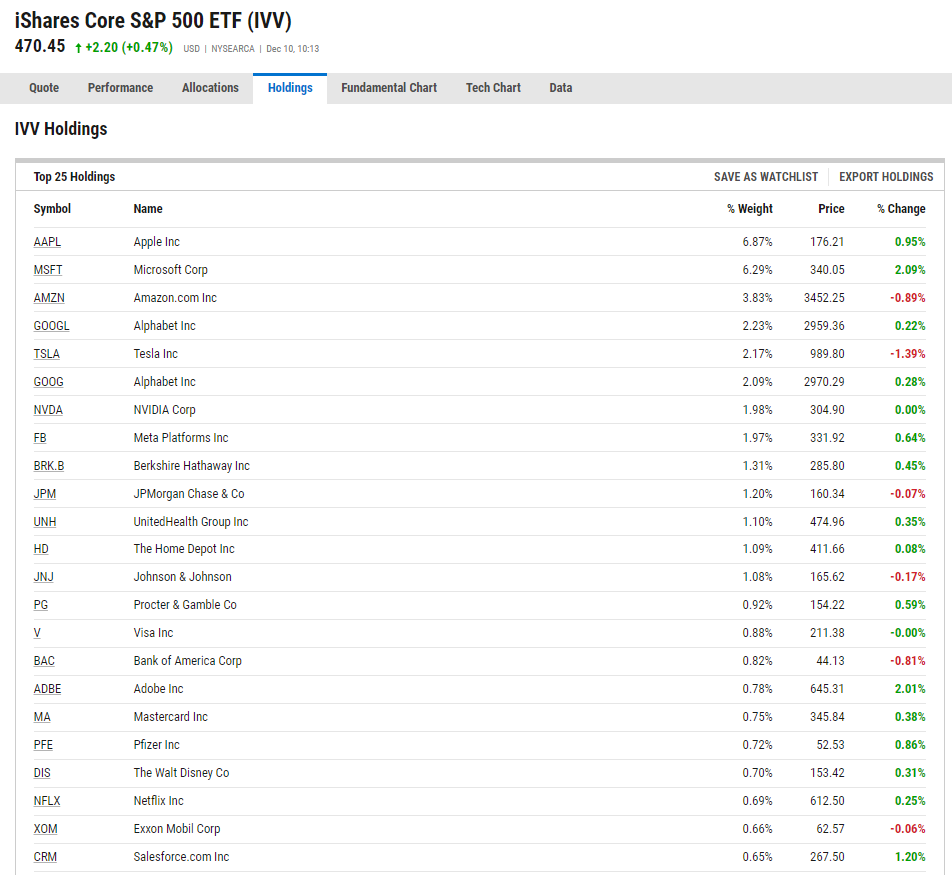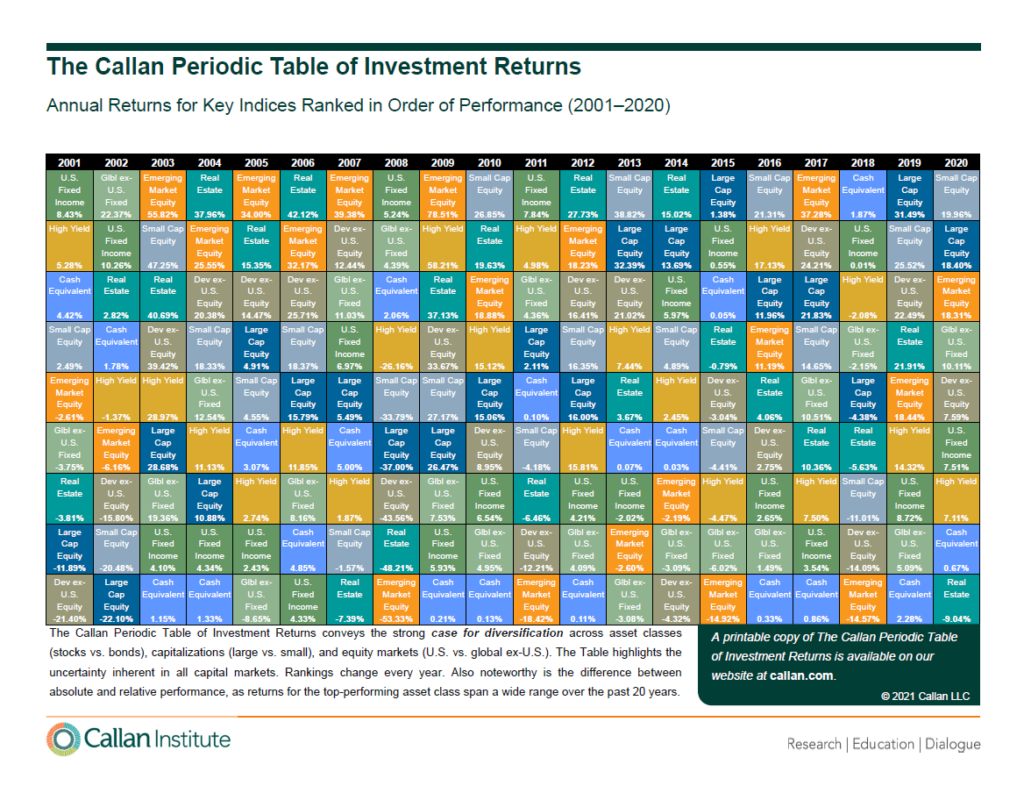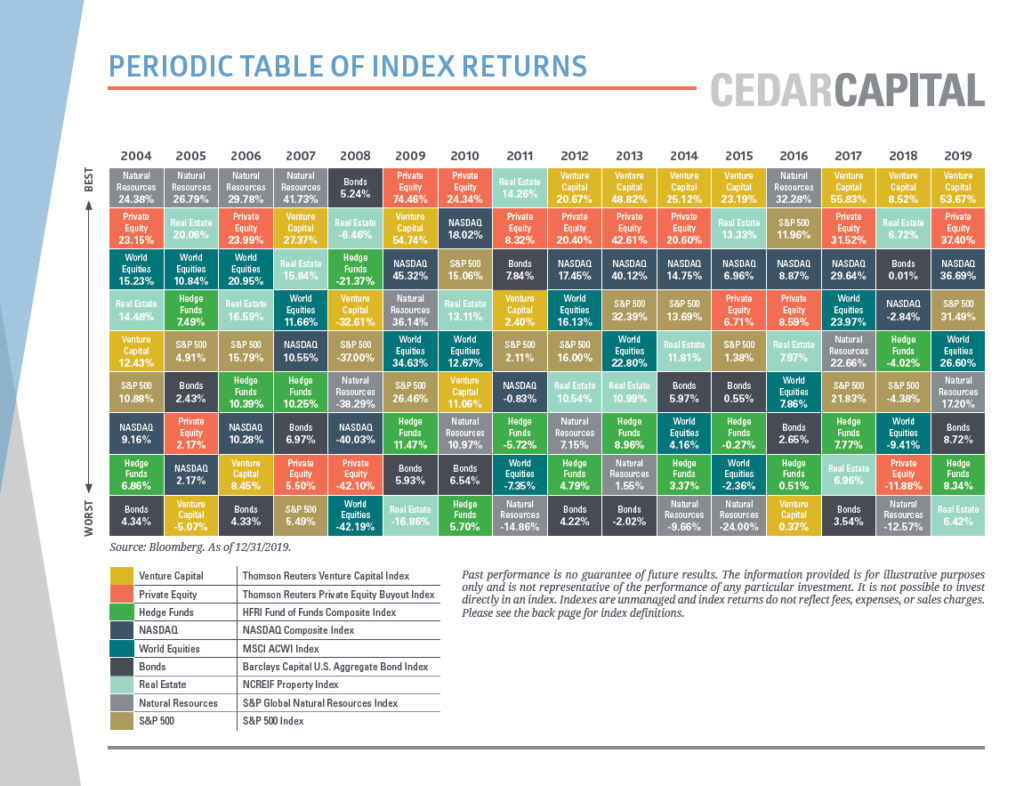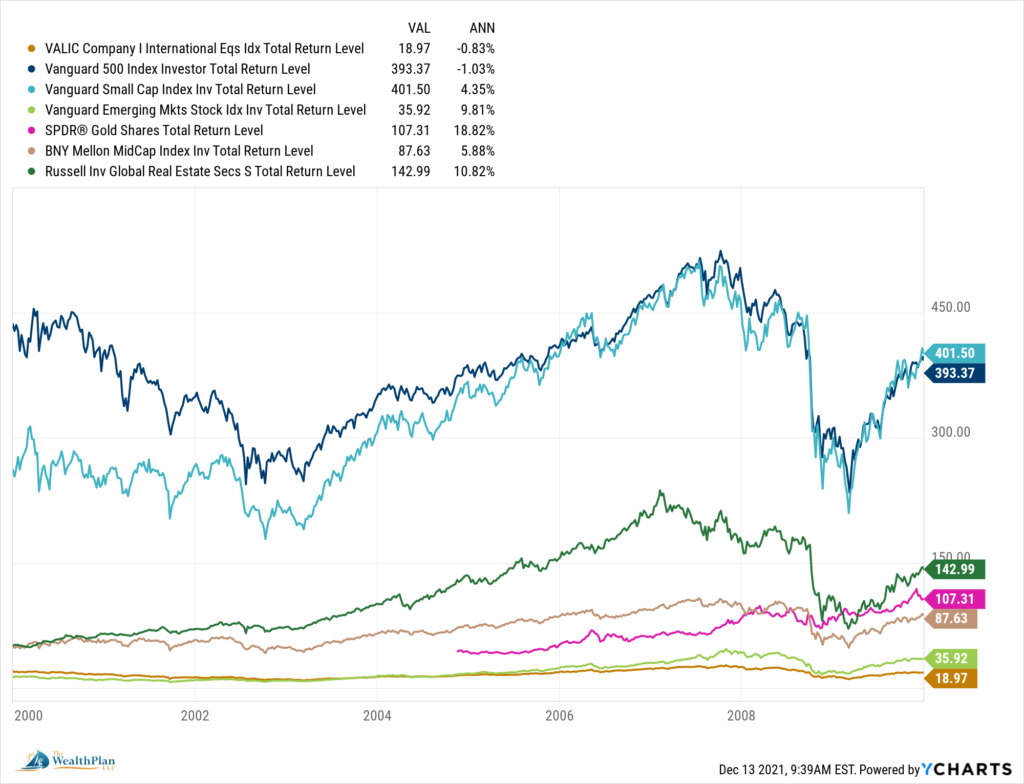“Diversification is the one free lunch of investing, and when you see a free lunch, the only rational thing to do is eat.” – Cliff Asness
Dear First Mates,
As 2021 is slowly fading away, I would like to wish each of you a happy holiday season. I love this time of year as the beautiful lights and decorations fill me up with joy and optimism.
A common question I receive from clients on occasion is, “Dave, my portfolio increased by [x]% this year, but the S&P did even better. Can we just invest in the S&P 500 going forward?” This is a fair question that deserves its own newsletter. So, here it is.
To clarify, I am going to answer two questions here:
1) Should we invest all monies in the S&P 500?
2) Should the S&P 500 be our primary performance benchmark?
Let me say at the outset that I’m a big fan of the S&P 500 and maintain a significant allocation there for clients, but my answer is an unequivocal NO to both questions.
Before we begin – What is the S&P 500?
The S&P 500 is the most widely used and popular benchmark for how the U.S. stock market is performing. It refers to the Standard and Poor’s 500, which is a stock market index that tracks the performance of the 500 largest companies listed on stock exchanges in the United States. When looking at the top 25 holdings below, it’s unsurprising why it’s so popular!

Should we invest our entire portfolio in the S&P 500?
No! Here are three reasons why.
1) Diversification is the name of the game.
A diversified portfolio comprises many distinct stock and bond asset classes (i.e. categories). As you can see below, each year produces different winners and losers. Because of this, we do not want to eliminate categories that have the potential to outperform the S&P 500 in the future. Some asset classes include real estate, international companies, or smaller U.S. companies.

Furthermore, the investment universe offers much more than large U.S. companies – such as hedge funds, private markets, digital assets (cryptocurrency), and natural resources. The primary reason to hold alternative investments is to increase your return and lower your risk by having uncorrelated investments in your portfolio. By doing so, you may earn a higher expected return with lower volatility. Ultimately, diversification prevents you from making a killing so you never get killed.

2) The S&P 500 can struggle for a long stretch of time.
As you can see in the image below, the 2000s was a very rough time for the S&P 500. The Dotcom Bubble, which started in 2001, was then followed by The Great Recession of 2008. The end result was the S&P 500 lost around 1% per year FOR A DECADE. Fortunately, you can see in the image below how other asset classes produced positive returns over the same time period. A lost decade, pending the allocation, became positive for those adequately diversified. Charlie Munger once said, “The first rule of compounding: Never interrupt it unnecessarily.”

Some investors, not seeing portfolio growth during this time, gave up and sold their securities. Who can blame them? Their behavior is understandable given the power of loss aversion which states that the pain of losing $100 is often far greater than the joy gained in finding the same amount.
But that, my friends, is the BIG MISTAKE. As I always say, the wrong portfolio is the one you can’t stick with – FOREVER. The point I’m trying to drive home here is that if diversifying kept you in the market, that is all that matters. Fortunately, the 2010s saw the S&P 500 roar back (like it always has historically speaking), with those who were patient and disciplined being highly rewarded. Fortune favors the bold!
3) A very small number of stocks produce most of the returns over time.
I recently stumbled on research that demonstrates how, ironically, public and venture capital markets are not so different. What if those few companies that will drive returns over the next 20 years are not currently in the S&P 500? What if they are in other asset classes—like the ones we saw above—or don’t even exist yet?
Is the S&P 500 a good benchmark for success?
Using the S&P 500 is an okay option for comparing or benchmarking your portfolio’s success. However, I think there are two better benchmarks to use. First, I’d use a benchmark that closely resembles your actual portfolio. My client portfolios serve as benchmarks themselves since they represent the global markets. Second, benchmark your portfolio with a return needed to achieve your financial goals. For example, I use a conservative return target (like 6%) in plans to minimize clients’ chances of falling short.
In conclusion, investing strictly in the S&P 500 isn’t a wise move when looking at its history. It is not diversified, can underperform for a long time, and can miss out on tomorrow’s winning stocks. Ultimately, I fear it can lead to behavioral errors, which are everything in personal finance and investing. The S&P 500 has been on fire and is currently the red dot. However, I learned many years ago to never ever solely chase the red dot.
Resources
How To Increase the Odds of Owning the Few Stocks that Drive Returns by Vanguard
Tails, You Win by Morgan Housel
Do Stocks Outperform Treasury Bills by W. P. Carey School of Business
Dave’s Picks
Justin Timberlake – Like I Love You (Official Video)
World’s Coolest Flight Attendant
Same As Ever by Morgan Housel
